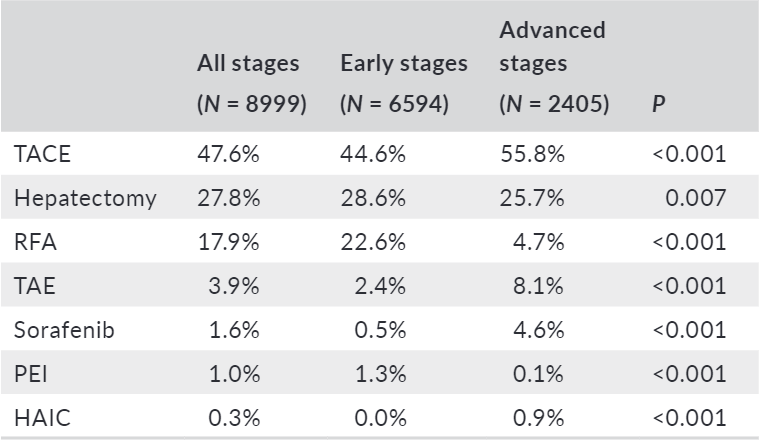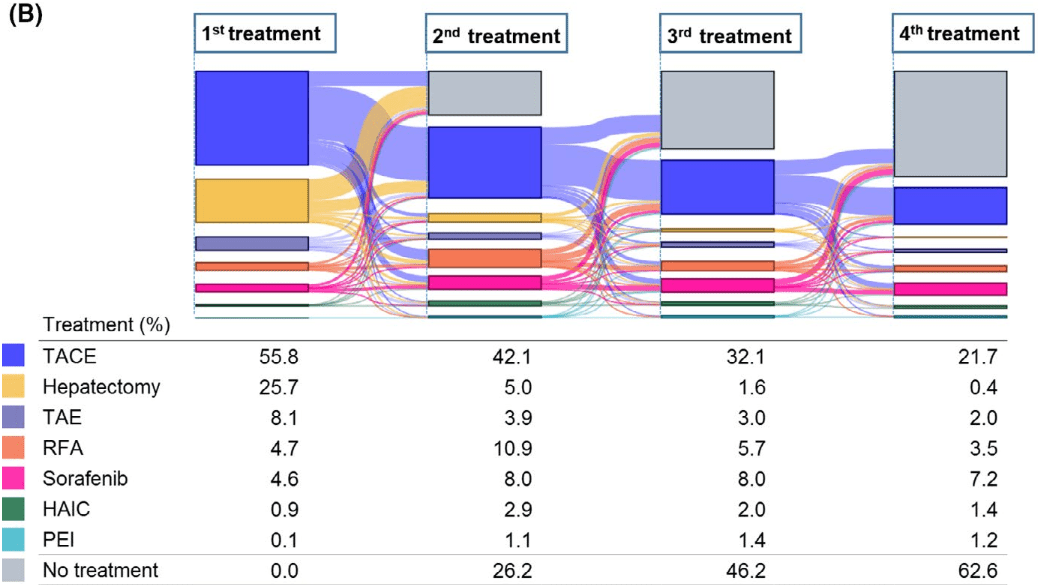This section outlines how the data of MDV can be used by reviewing some cases.
Case Study (Epidemiology)
Database Analysis of Patients with Hepatocellular Carcinoma and Treatment Flow in Early and Advanced Stages

Akada K, Koyama N, Taniguchi S, et al. Database analysis of patients with hepatocellular carcinoma and treatment flow in early and advanced stages [J]. Pharmacol Res Perspect. 2019;7(4):e00486.
Introduction
- Prognosis of advance hepatocellular carcinoma (HCC) is not as developed when compared to treatment modalities and diagnosis in Japan.
- Different treatment flows are seen for each kind of HCC stage based on Barcelona Clinic Liver Cancer (BCLC) staging system but it is not well understood in Japan.
Objectives of the Study
To understand the following content by utilizing real world data from Japanese claim database.
- Baseline characteristics and treatment flow of HCC patients;
- Variances in treatments between early and advanced stages;
- Impact of tumor stage progression
Study Design and Criteria
Study Design: Retrospective Cohort Study
Target Period: April 1, 2008 – January 31, 2017
Inclusion Criteria
- Patient who have both following criteria
- ICD10 code: C220
- α‐fetoprotein (AFP)
- des‐γ‐carboxy prothrombin (DCP)
- Transcatheter arterial chemoembolization (TACE)
- Transcatheter arterial embolization (TAE)
- Hepatectomy
- Radiofrequency ablation (RFA)
- Percutaneous ethanol injection (PEI)
- Hepatic arterial infusion chemotherapy (HAIC)
OR
Have sorafenib chemotherapy with (>) 180 days of follow-up period after definitive diagnosis of HCC
Characteristics of Patients with Hepatocellular Carcinoma

Serum Laboratory Values and Child Pugh Scores

First-line Treatments for HCC Patients

Sankey Diagram of Treatment Flow for HCC Patients
Change of treatments from first to fourth line were observed in early (A) stages

Sankey Diagram of Treatment Flow for HCC Patients
Change of treatments from first to fourth line were observed in advanced (B) stages

Conclusion
- The study outlines the clear differences in baseline characteristics and treatment flow between early and advanced stages.
- Further analysis could be considered and beneficial regarding treatment selection and forecasting outcome such as survival with longer follow-up data on the database used for this study.
Service used for the Case Study:
Abbreviations
| BCLC | Barcelona Clinic Liver Cancer |
| HAIC | Hepatic arterial infusion chemotherapy |
| HBV | Hepatitis B virus |
| HCC | Hepatocellular carcinoma |
| HCV | Hepatitis C virus |
| RFA | Radiofrequency ablation |
| TACE | Transcatheter arterial chemoembolization |



